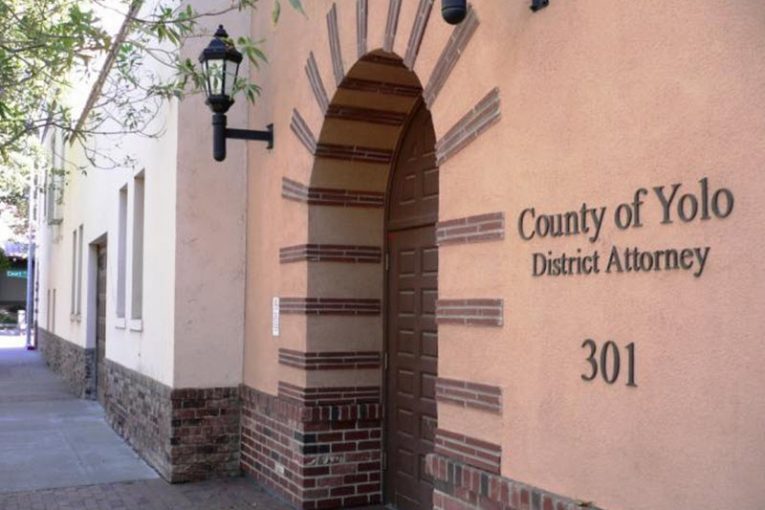

By Robert J. Hansen
Woodland, CA – In January 2021, the Yolo County District Attorney’s office adopted a Harm Reduction Policy (HR-Diversion); however, because of the very low numbers of people who actually engaged in substance use treatment, District Attorney Jeff Reisig modified the original HR-Diversion pilot in January 2022 according to a press release by the DA.
In 2021, individuals arrested or cited for drug possession, drug paraphernalia and certain drug and/or alcohol intoxication offenses, were referred to the county’s Health and Human Services Agency (HHSA) for substance use assessment and treatment, instead of facing jail time.
Drug sales and possession for sale were not eligible offenses.
“Unfortunately, the results of our program proved that this type of harm reduction approach for such drug offenses is not an effective strategy. While it was important for us to test such a model, our experience and the data have unequivocally established that more is needed to encourage meaningful engagement and treatment by the affected population,” Reisig said.
This diversion program was initiated in response to the statewide trend of declining participation in drug courts as a result of reduced penalties for drug possession after the passage of Proposition 47 in 2014.
In Yolo County, participation in drug court decreased by approximately 86 percent between 2014 and 2020 according to the DA.
After the first six months of the HR-Diversion program, the collected data revealed that less than 15 percent of those criminally arrested for eligible drug offenses, who were referred to HHSA for an assessment, contacted HHSA at all. And just 10 percent of those individuals referred had engaged in any form of substance use treatment.
“The core idea behind the program was to see if overall treatment engagement and public safety would improve by law enforcement ‘passing the baton’ to the substance use experts at the Health and Human Services Agency so they could test a true harm reduction model, as advocated for by many in our community and across California,” Reisig said.
HHSA provided treatment engagement data with which an analysis was conducted of all those referred to the program during 2021.
Of the 513 individuals referred to HHSA, 126 went on to reoffend during 2021, approximately 27 percent.
Nearly half of those who went on to reoffend had multiple arrests. Of the 126 who were rearrested, more than half of the arrests were drug related offenses.
There were 934 total arrests for drug offenses in 2021, according to the Commons data portal, leaving 421, or 45 percent, of individuals that were never referred to HHSA.
Effective January 2022, the District Attorney amended the HR-Diversion program so that individuals cited and/or arrested for drug possession and related offenses are now formally charged with all appropriate offenses by criminal complaint and required to appear in court.
“We need to ensure that our streets are safe and free of open drug use and the crime and community decay that is often connected to serious substance abuse.” Reisig stated. Results of the restructured program will be reported in coming months.
Those who do appear in court are then afforded the opportunity to avoid further prosecution by returning with evidence of their treatment engagement with HHSA.
“We changed the policy to provide an enhanced incentive for these individuals to seek treatment,” Reisig said. “‘Avoid prosecution by choosing treatment’ is clearly the message we are sending.”
Yolo County has a long history of commitment to treating mental health and addiction issues. For nearly a decade, the District Attorney has partnered with HHSA and other agencies to offer intensive treatment programs for the seriously mentally ill and addicted in certain felony cases.
Yolo County was awarded two grants by the CA Board of State Community Corrections on July 25, 2022.
The first grant was submitted by the Health and Human Services Agency in the amount of $6M.
The program’s goal is to reduce recidivism by expanding access to substance use disorder treatment, the DA said.
The second grant will provide mental health services, substance use disorder treatment, and diversion programs for people involved in the criminal justice system.
“We want people to get help with their substance use issues while we also avoid using the limited resources of the criminal justice system to punish individuals who are suffering from addiction,” Reisig said.


Those are the key statistics right there.
Yes… the numbers are disturbing…
The decisions based on those, similar… looks a lot like a way to justify prosecutor and defense attorneys workload/workforce #’s, and the salaries/compensation thereof.
According to the piece, one year of ‘experiment’… a data point is not equal to a trend line.
I know not “the answer”… but the two extremes do not appear to be the appropriate answer.
There’s only two options for outpatient treatment in Yolo (to my knowledge) , one in West Sac, and Communicare in Woodland. Communicare is not a very accommodating especially if you have a job or live a significant distance away. Now consider there’s only one residential inpatient treatment facility “4th and hope -Walter’s house” and the “program” is just a three months of a semi jail experience, with no curriculum to facilitate employability or life skills. It is understaffed, a private nonprofit, and wholly ineffective. I like the simplistic, “well we tried, I guess we’ll just go back to jailing them again…” style of their approach. Programs need to be funded, they need to be adaptable, and most of all they need to help people leave with some hope that they’re better equipped to deal with life. It’s a big problem, but I can assure you this, jail is not the answer. Breaking people and robbing them of their jobs, homes, vehicles, is no way to set someone up for success.
Notice this was implemented in January but not publicized until July after the election